Project Kick-off
February 8-9, 2019
Northern Virginia
email cguske@aiava.org for details
Project Kick-off
February 8-9, 2019
Northern Virginia
email cguske@aiava.org for details
Started in 2009, The Emerging Leaders in Architecture: An Honors Academy of the American Institute of Architects Virginia (ELA), develops future leaders in architecture firms, in communities, and in the profession. The goal is to accelerate the growth of emerging architects and provide the tools and experiences needed to advance their careers and serve society as leaders in the community.
The 2019 Class includes:
Macy Anne Carman-Goeke, Annesley Cole, Assoc. AIA, Ashley Falwell, Assoc. AIA, Karim Habbab, Assoc. AIA, Kelley Holmes, AIA, Sydney Huibregtse, Assoc. AIA, Breanna LaTondre, Assoc. AIA, Ryan Oldach Assoc. AIA, Jeffrey Rynes, AIA, Kelsey Sinichko, AIA, Ianta Summers, Zakiya Toney Assoc. AIA, Jeanne Vick AIA, Alexander Zondlo Assoc. AIA, Divya Nautiyal, Assoc. AIA and Ojima Glover.
The 2019 ELA Steering Committee are Christopher Kehde, AIA (Chair), Jennifer Stringer, AIA (Vice Chair), Gwyn Gilliam, AIA (Past Chair), Abigail Watson, AIA, Bruce Wardell, AIA, Scott Boyce, AIA, Spencer Lepler, AIA, and Taylor Clark, AIA.
The Emerging Leaders in Architecture program needs your support! Contact Cathy Guske, Member Services Director to discuss the various ways to show your support.
Inheritance and Inspiration
Richmond, VA
The 2018 Emerging Leaders in Architecture (ELA) program has completed their fourth session of the year and it is shaping up to be a great year!
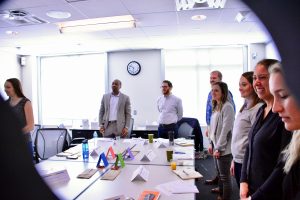 The April session was titled Practicing Professionalism and focused on the esteemed role of the architect as a pillar of the community that is looked to for leadership by many stakeholders. StrengthFinders certified coach, Kahtra Kayton, worked with the class to review their CliftonStrengths. Class participants learned more about their own strengths, shared it with the group, and then discussed how these attributes could best elevate the group’s performance on the class project. Next, Missy Rand conducted a dynamic session entitled Ethics and Standards of Practice. During this component, the class split into groups to role-play and discuss real-world examples of scenarios that firm leaders may face. Alison Mullins, Esq. led off the afternoon with her engaging and laugh-producing presentation At the Crossroads of Contracts, Construction Documents, and Licensing Obligations. A topic normally considered mundane by many was presented in an attention captivating way that taught the class key points in risk management. The session concluded with Paul Beckman’s Building Codes, which covered best practices in permitting and document review processes during the various design phases.
The April session was titled Practicing Professionalism and focused on the esteemed role of the architect as a pillar of the community that is looked to for leadership by many stakeholders. StrengthFinders certified coach, Kahtra Kayton, worked with the class to review their CliftonStrengths. Class participants learned more about their own strengths, shared it with the group, and then discussed how these attributes could best elevate the group’s performance on the class project. Next, Missy Rand conducted a dynamic session entitled Ethics and Standards of Practice. During this component, the class split into groups to role-play and discuss real-world examples of scenarios that firm leaders may face. Alison Mullins, Esq. led off the afternoon with her engaging and laugh-producing presentation At the Crossroads of Contracts, Construction Documents, and Licensing Obligations. A topic normally considered mundane by many was presented in an attention captivating way that taught the class key points in risk management. The session concluded with Paul Beckman’s Building Codes, which covered best practices in permitting and document review processes during the various design phases.
The group continues to advance with the class project. The next session will take place in Richmond on May 11.
Special thanks go out to the sponsors of the 2018 ELA program and to all who contribute in any capacity to make the program a success.
ELA Program Sponsors:
Patron ($1,500 – $1,999)
Moseley Architects
Sustaining ($1,000 – $1,499)
Hampton University
Supporter ($500 – $999)
SMBW
VMDO Architects
AIA Central Virginia
Contributor ($1 – $499)
Alloy Architecture & Construction
Clifton Tiller, AIA
2Plys
Jacobs
NFM Lending
Maya Restaurant
This year’s class of the Emerging Leaders in Architecture (ELA) program project will focus on the 10th & Page neighborhood of Charlottesville. The 10th & Page neighborhood is a traditionally African-American neighborhood that has a public housing presence. The city of Charlottesville is in desperate need of affordable housing and the City’s previous actions regarding redevelopment of Vinegar Hill has left a racial inequity that is still present today. Development of the surrounding areas around 10th and Page has led to a neighborhood that’s beginning to feel trapped by car traffic and surrounding, high-rent developments.
On Friday, March 9th, the ELA class met with local residents, local non-profits, and city officials to begin their dive into their work on the project area. City of Promise Program Director, Denise Johnson, spoke to the group about City of Promise’s mission and what they have found out about the area during its work. One thing that was noted was that most people in the neighborhood work from a place of surviving instead of sustaining. During their discussion with the residents, the class found that there has been a sense of tone deafness between the developers and residents. Some families that have lived in the neighborhood for generations are now feeling negative pressures from new surrounding developments.
In addition to their time spent meeting on Friday, the class also took time on Saturday, March 10th to continue their research. The group mapped the area to analyze different aspects of the site including topography, bus routes, school locations, and surrounding commercial buildings. They also continued their discussions with local residents.
Special thanks go out to the sponsors of the 2018 ELA program and to all who contribute in any capacity to make the program a success.
ELA Program Sponsors:
Patron ($1,500 – $1,999)
Moseley Architects
Supporter ($500 – $999)
SMBW
VMDO Architects
AIA Central Virginia
Contributor ($1 – $499)
Alloy Architecture & Construction
Clifton Tiller, AIA
Maya Restaurant
NFM Lending
AIA Virginia’s award-winning Emerging Leaders in Architecture (ELA) program was developed to jump-start the careers of young professionals. Conceived of and lead by a passionate steering committee of successful architects, the program was designed to share the things they wished they had learned in architecture school.
Each of the seven day-long-sessions focuses on developing essential skills like financial management, communication and negotiation, advocacy and public service, and much more.
Want to be a member of this elite group of leaders? The application for the 2018 class will be available later this summer. Contact Marshall Dreiling for information on how to nominate an emerging leader or with any questions about the program.
We asked members of the ELA class of 2017 the same five questions, here are their inspiring answers.
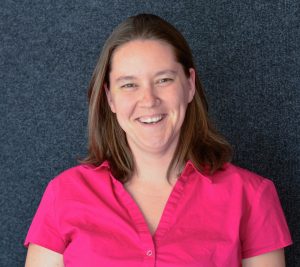 Q: What building evoked a strong reaction from you recently—either positive or negative?
Q: What building evoked a strong reaction from you recently—either positive or negative?
A: Last fall as part of Doors Open Baltimore, I had the opportunity to visit the Baltimore Basilica for the first time. The cathedral itself is awe inspiring, but the best part was going down to the undercroft. The masonry work itself was well worth the visit!
Q: What is the last book you read?
A: Last book I finished was A Man Called Ove and I’m currently reading The Subtle Art of Not Giving a F*ck and Homo Deus, A Brief History of Tomorrow.
Q: How did you discover your passion for architecture?
A: I was introduced to the field of architecture the summer after my freshman year in high school when I was bored and my mom made me get a summer job at the architecture firm in her office building. My passion for architecture came out of a love for both science and art from a young age. I always loved building things, even when they didn’t make sense to anyone but me (pillow forts were the best!).
Q: What is your favorite thing to do to relax?
A: Go to a Nationals game.
Q: What advice do you have for aspiring architects?
A: Don’t be afraid to ask questions. No one but yourself expects you to know everything. Admit when you don’t know something, and make it your mission to learn. If you don’t understand why something is done a certain way ask. Either you’ll learn a lot, or you’ll affect change when the person you’re asking will realize there’s a better way.
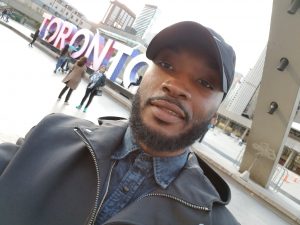 Q: What building evoked a strong reaction from you recently—either positive or negative?
Q: What building evoked a strong reaction from you recently—either positive or negative?
A: The expansion of the Musée National des Beaux-arts du Québec (MNBAQ), is a project with incredibly fascinating details that can be illuminated with simple design. The expansion, designed by OMA, adjacent to the classical cathedral, creates a new creative link between religion, urban vistas, and modern architecture.
Q: What is the last book you read?
A: The last book I read was Contagious by Jonah Berger. The book provides an analytical description on why some ideas come to fruition overnight, while others are unfulfilled. It also explains in a thought- provoking way, how word of mouth and social influence work to make an idea or project contagious.
Q: How did you discover your passion for architecture?
A: Being the son of military service members, and traveling around the world has awarded myself a different perspective on culture, the arts, and architecture. However, it was not until my freshman year of high school when I took my first AutoCAD course that I became fascinated with the field. My natural curiosity and that fascination led my passion for architecture towards continued learning and research, in hopes of mastering the discipline.
Q: What is your favorite thing to do to relax?
A: I own a bright orange 1979 Chevrolet El Camino, which was my first dream car as a child. I love taking it out for a drive, any chance the weather is warm and sunny. It is the most relaxing feeling in the world to me because I feel like I’m driving through Hampton Roads in my own personal time machine.
Q: What advice do you have for aspiring architects?
A: My words of wisdom would be, let ambition and curiosity be your driving force. Many aspiring architects get bogged down within the inner workings of a firm. Never settle; you can see, do, or become anything you want with focus and determination. Be the individual who loves learning and not the individual who knows it all. The world is yours
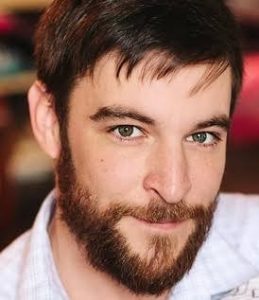 Q: What building evoked a strong reaction from you recently—either positive or negative?
Q: What building evoked a strong reaction from you recently—either positive or negative?
A: The Pantheon embodies materiality and structural expression in its purest form, resulting in a simple yet powerful architecture that reminds one that good design is timeless.
Q: What is the last book you read?
A: Dawn of Art: The Chauvet Cave. Watching my 3yo daughter draw using line quality to render perspective got me thinking about the origins of art and artists. The rendering done by some of our earliest ancestors is exceptionally advanced and shows that art and artists have been an integral part of human culture from the beginning. Highly recommend anyone that isn’t familiar with these paintings check it out.
Q: How did you discover your passion for architecture?
A: A visit to Kahn’s Kimball Art Museum early in my architectural education really solidified in my mind what I understood to be good architecture, and still serves as inspiration. I knew then I had chosen the right career.
Q: What is your favorite thing to do to relax?
A: Scuba diving is the epitome of a controlled breathing exercise, and is like traveling to another world. Backcountry hiking/backpacking is a great way to reconnect with nature, mind, and body. I have hiked in the Olympic and Cascade ranges in the PNW, Crater Lake, Yellowstone, and Yosemite, and hope to hike the Appalachian trail someday.
Q: What advice do you have for aspiring architects?
A: The term “professionally poor” is real, but don’t think you have to spend the rest of your career being paid a small fraction of your billing rate working for someone else. Dylan said “The times, they are a-changin’,” and the days of working your way up the ladder to partnership at a firm for most of your life before you are considered an architect are numbered. With online marketing and social media outlets, one can generate publicity without relying on well-established branding to bring in work. If you build it (well) they will come. Aim high and don’t be afraid to be independent. It’s risky and more work, but I immensely enjoy answering the question “who do you work for?”
 Q: What building evoked a strong reaction from you recently—either positive or negative?
Q: What building evoked a strong reaction from you recently—either positive or negative?
A: Not really one building/ structure, but the entire World Trade Center site. I was recently in NYC for a business trip and my hotel room overlooked the WTC site. I remember everything that happened the morning of September 11th very vividly and visited the site almost a decade ago. To see the transformation from then until now is truly remarkable. One World Trade Center Plaza is pretty amazing in itself – but Michael Arad’s design for the memorial is very powerful and Davis Brody Bond’s Museum (along with Snohetta’s design for the entrance Pavilion to the Museum) complements its well making for a very powerful piece of Architecture. It is definitely something I would recommend anyone who visits NYC to take the time to go visit.
Q: What is the last book you read?
A: Since I am actively taking the ARE – I don’t have much time for other reading, but Vince Flynn is one of my favorite authors at this time. The last book of his I read was American Assassin.
Q: How did you discover your passion for architecture?
A: I was exposed to the profession from an early age because my Father is an Architect. It is something that always interested me and it seems like something I always knew in my mind I would end up doing – the path to get there was just always up in the air. I took a somewhat circuitous route to end up where I am – but I think I always knew in the end, that Architecture was going to be my career choice.
Q: What is your favorite thing to do to relax?
Hang out with Family and Friends. My wife and I are lucky enough to live in the same neighborhood with friends of ours that we have known for a very long time. Watching all of our kids grow up and play together on a daily basis is the best. Our favorite spot to relax is the beach and since we only live a few miles away, we spent a lot of our free time there.
Q: What advice do you have for aspiring architects?
A: Follow your passion. Architecture, as a profession, has many different avenues in which you can pursue a career. Whatever it is that interests you – find that niche and follow through. The most important thing is to find what speaks to you and try to mold your career around that passion.
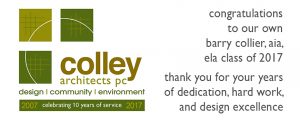
Q: What building evoked a strong reaction from you recently—either positive or negative?
A: Not a specific building, but a type – Cathedrals. The scale and details show all the craftsmanship and skill that was needed to design and build.
Q: What is the last book you read?
A: Right now I have been alternating between code books and the Louden Melrose / Shenandoah West Neighborhood Transformation Plan. The Neighborhood Transformation Plan provides a lot of insight into the area of our ELA class project.
Q: How did you discover your passion for architecture?
A: For as long as I can remember I have always wanted to be an architect. I started by drawing the childhood homes of my parents as a child.
Q: What is your favorite thing to do to relax?
A: Cookout on the grill with a good beer and spend time with my family.
Q: What advice do you have for aspiring architects?
A: Take risks, move somewhere completely new, and get out of your comfort zone. Your experience as an aspiring architect, good or bad, will influence you throughout your entire career.
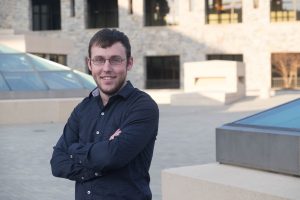 Q: What building evoked a strong reaction from you recently—either positive or negative?
Q: What building evoked a strong reaction from you recently—either positive or negative?
A: La Tourette by Le Corbusier, especially the chapel. I had the opportunity to stay there for two days, which were some of the most relaxing in recent memory.
Q: What is the last book you read?
A: The Last Kingdom by Bernard Cornwell.
Q: How did you discover your passion for architecture?
A: Legos, when I was younger I would always build things with them. After building a set, I’d always take them apart and make my own creations.
Q: What is your favorite thing to do to relax?
A: Play guitar, though I don’t get the chance to play as much as I would like to anymore.
Q: What advice do you have for aspiring architects?
A: As I am still an aspiring architect, I would say to never stop learning. Be aware that you don’t know everything and never be afraid ask questions. If someone is willing to impart wisdom, be willing listen.
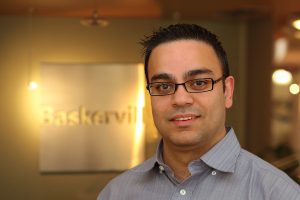 Q: What building evoked a strong reaction from you recently – either positive or negative?
Q: What building evoked a strong reaction from you recently – either positive or negative?
A: The Lerner Hall, at Columbia University, has always been an inspiring piece of architecture for me. The “Glass House” is a 5-story curtain wall structure, which connects the ground floor to the floors above with a series of structural glass ramps and stairs. Walking up those suspended ramps gives a sensation of floating.
Q: What is the last book you read?
A: I prefer audio books, as they always seem to go faster than reading. The last book I read though, would be Born To Run: A Hidden Tribe, Superathletes, and the Greatest Race the World Has Never Seen by Christopher McDougall. The book was inspiring enough for me to do my Architecture Thesis on it.
Q: How did you discover your passion for architecture?
A: I have always been good at Arts and in 6th grade was told I have a future in Architecture. Needless to say, ever since I aspired to become an Architect. Growing up in Dubai, U.A.E. and seeing all the astonishing buildings around, added fuel to the passion.
Q: What is your favorite thing to do to relax?
A: Anything that breaks up the monotony of a daily routine will do. If I had to pick, I would go with either cuddling with the kids on the couch, to watch a movie or watching them play while using their endless imagination.
Q: What advice do you have for aspiring architects?
A: Embrace technology advancement, yet never stop hand sketching. In a technology driven society, that is the one talent, as Architects, we need to hold onto. Computers work fast, but the brain to hand coordination will always out do a computer.
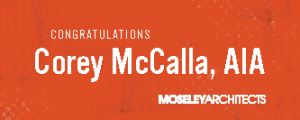
Q: What building evoked a strong reaction from you recently—either positive or negative?
A: VCU’s Institute for Contemporary Art, by Steven Holl (under construction) – I was intrigued to see a building design by Holl, 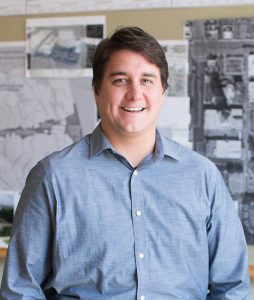 one of my favorite contemporaries, in my city. I look forward to seeing it open and am curious about its life in a historic city.
one of my favorite contemporaries, in my city. I look forward to seeing it open and am curious about its life in a historic city.
Q: What is the last book you read?
A: Wool by Hugh Howey (but really it was Dream Animals: A Bedtime Journey by Emily Winfield Martin, read to my daughter 100+ times)
Q: How did you discover your passion for architecture?
A: Through my father, who is also an architect. He took me to see Kahn’s Salk Institute when I was a teenager, and it changed my life.
Q: What is your favorite thing to do to relax?
A: Seeing a film at the theater.
Q: What advice do you have for aspiring architects?
A: Look for inspiration in every aspect of your life. Whether it comes from traveling, or reading, or film, or simply comes from a conversation at a bar, one can be inspired at any time. And never stop asking questions.
Q: What building evoked a strong reaction from you recently—either positive or negative?
A: What is the last book you read? Architect’s Essentials of Ownership Transition by Peter Piven. For fun, Where the Wild Things Are by Maurice Sendak along with hundreds of other children’s 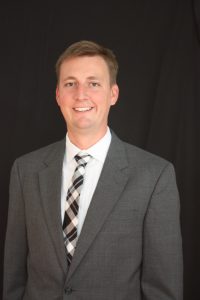 books with my daughter!
books with my daughter!
Q: How did you discover your passion for architecture?
A: I always enjoyed drawing, painting, and sculpture and intended to pursue a formal education and career in art. During my sophomore year of high school, my art class performed a research project on well-known buildings and their architects; I selected I.M. Pei’s entrance to the Louvre. The energy invested on this exercise opened my eyes to the opportunity to pursue art as a profession on a large scale. I was hooked.
Q: What is your favorite thing to do to relax?
A: Going to the beach and just about anything with my wife and daughter.
Q: What advice do you have for aspiring architects?
A: Be vocal about your goals and opportunities you wish to pursue. Build your knowledge base as broad and as quickly as you can. Seek out a good mentor; someone willing to invest time in you and advocate on your behalf. Soak up the knowledge of experienced members your office by finding out what skillsets they excel at and asking as many questions as they are willing to answer.
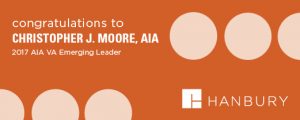
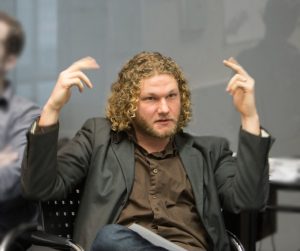 Q: What building evoked a strong reaction from you recently—either positive or negative?
Q: What building evoked a strong reaction from you recently—either positive or negative?
A: The Chesapeake Bay Foundation’s Brock Environmental Center. Not only do I appreciate the thought, design and innovation put into to making it as site friendly as possible, I use the wind turbines as a gauge for water conditions every time I head into or out of the inlet.
Q: What is the last book you read?
A: For Leisure: The Picture of Dorian Gray by Oscar Wilde; For Inspiration: Steal Like an Artist by Austin Kleon; For Work: The Florida Building Code 5th Edition, Chapter 10
Q: How did you discover your passion for architecture?
A: In high school, I enjoyed problem solving and technical drawing. Architecture was the next logical step. It was only later that I discovered it as a theory and an art form.
Q: What is your favorite thing to do to relax?
A: Anything on, in or under the water.
Q: What advice do you have for aspiring architects?
A: Often the “default” solution is the right solution.
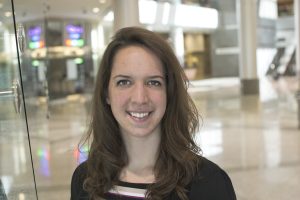 Q: What building evoked a strong reaction from you recently—either positive or negative?
Q: What building evoked a strong reaction from you recently—either positive or negative?
A: The renderings for the design of a vertical farm in the Sunqiao Urban Agricultural District designed by Sasaki Associates. The building is a mixed use, hydroponic vertical farm, and education center amidst the urban fabric of Shanghai. I think it is a beautiful and exciting solution to start to supplement the loss of vast amounts of farmland to rapid urbanization.
Q: What is the last book you read?
A: The Caine Mutiny by Herman Wouk
Q: How did you discover your passion for architecture?
A: When I was seven years old my parents renovated their house. I decided to take matters into my own hands and drew a set of CD’s, complete with a second-floor window to backyard water slide. They ultimately went with the documents generated by the design professional that they had hired, but I’m still striving for that water slide.
Q: What is your favorite thing to do to relax?
A: Run, draw, or play my saxophone.
Q: What advice do you have for aspiring architects?
A: Work hard, push boundaries, and don’t forget to have fun!
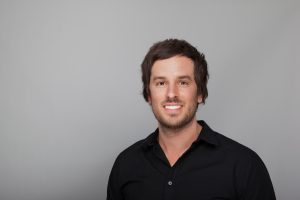 Q: What building evoked a strong reaction from you recently—either positive or negative?
Q: What building evoked a strong reaction from you recently—either positive or negative?
A: The Shard by Renzo Piano had a positive impact on me when I saw it visiting my family and friends back in the UK. The scale of it was immense and I loved how it seemed to pierce the surrounding city landscape. The views from the top were breathtaking.
Q: What is the last book you read?
A: DADA by Jimmy Fallon. I love getting to read this to my newborn girl.
Q: How did you discover your passion for architecture?
A: I always enjoyed visualizing rooms in my house when I was a child and letting my imagination come up with new concepts on how they would look at function. I would also think about my dream home and what it would look like and then I would then start thinking about creating larger buildings that would make an impact in my community.
Q: What is your favorite thing to do to relax?
A: As soon as I get home I love to play with my newborn baby girl. It doesn’t matter how busy my day has been; she always makes me smile. I also love to play and watch sports and go to the gym.
Q: What advice do you have for aspiring architects?
A: Always be open to learning no matter what the project is. Even the smallest of jobs that don’t seem glamorous can have many different things to learn from. Don’t compare yourself to others and don’t try to be someone that you are not.
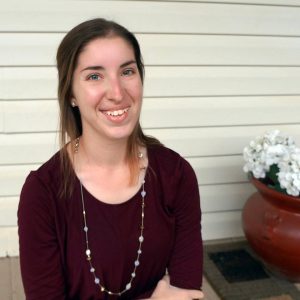 Q: What building evoked a strong reaction from you recently—either positive or negative?
Q: What building evoked a strong reaction from you recently—either positive or negative?
A: The Belvedere Gardens Mausoleum in Salem, VA by SMBW. Its physical and metaphorical connection to the surrounding landscape creates a strong sense of place.
Q: What is the last book you read?
A: Kaplan’s Site Planning & Design Study Guide since I’m in the middle of exams.
Q: How did you discover your passion for architecture?
A: I was tasked with designing my own house as part of a sixth-grade computer class. After the project ended, I started drawing every building I visited and fell in love with architecture.
Q: What is your favorite thing to do to relax?
A: Hiking, riding motorcycles, and spending time with my three dogs.
Q: What advice do you have for aspiring architects?
A: Continue to develop your skills and hobbies outside of architecture. Learn how to communicate your ideas clearly and effectively. Don’t be afraid to ask questions, and never stop learning.
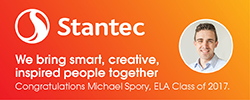
 Q: What building evoked a strong reaction from you recently—either positive or negative?
Q: What building evoked a strong reaction from you recently—either positive or negative?
A: Thorncrown Chapel by E. Fay Jones, in Eureka Springs, Arkansas. The chapel sits so lightly in the forest—somehow you’re in a treehouse, a pavilion, a church, and the Ozark woods, all at the same time. And how it was constructed (every piece of lumber was no larger than could be carried by two workers) aligns with the landscape itself—one of the finest buildings in the country.
Q: What is the last book you read?
A: Garden City by John Mark Comer
Q: How did you discover your passion for architecture?
A: By accident, really. I fell in love with art and photography in college, and architecture seemed like something that took those big abstract ideas and put them into reality through design. As a farm kid, I loved the practicality of architecture alongside the possibility for creativity, so I took a risk, applied to graduate school, and kept on going.
Q: What is your favorite thing to do to relax?
A: Playing soccer. Staying active clears my head.
Q: What advice do you have for aspiring architects?
A: Make (and keep) friends and interests “unrelated” to architecture. It can easily be an all-consuming world, and relating to other ideas and people will not only keep you sane and grounded but also provide a wider array of tools to bring to your designs and practice. Economics, graphic design, literature, philosophy, music—go for it.
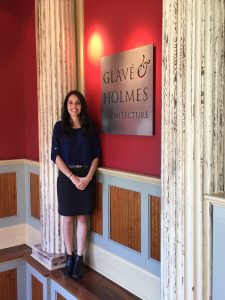 Q: What building evoked a strong reaction from you recently—either positive or negative?
Q: What building evoked a strong reaction from you recently—either positive or negative?
A: The Basilica of Notre Dame in Montréal, CA. It is one of the most colorful church interiors I’ve been in, it was exceptionally beautiful and inspiring.
Q: What is the last book you read?
A: The Magicians by Lev Grossman.
Q: How did you discover your passion for architecture?
A: 6th grade was the first time I said: “I’m going to be an architect.” I drew house plans as gifts for my friends. When my parents were looking for a new house, I loved going on tours and would study the MLS listing sheet.
Q: What is your favorite thing to do to relax?
A: Practicing yoga. It has been a great source of inspiration and enlightenment for me.
Q: What advice do you have for aspiring architects?
A: It’s your practice, do what will make you happy and don’t lose sight of where you want to be keeping in mind that it may change as you change.
This year, the participants of AIA Virginia’s Emerging Leaders in Architecture (ELA) program have decided to tackle the issue of low-income communities with limited access to healthy food, more commonly known as food deserts.
Through meetings with numerous local Richmond groups, they have seen that food deserts are a systemic problem in Virginia’s capital city that require a multifaceted approach rather than a targeted solution.
Their project, Closing the Food Gap: Grow. Learn. Share., doesn’t attempt to solve food disparity through access alone, but rather is a series of insertions that provide, educate, and engage the communities for which they serve.
AIA Virginia’s award-winning Emerging Leaders in Architecture (ELA) program was developed to jump-start the careers of young professionals. Conceived of and lead by a passionate steering committee of successful architects, the program was designed to share the things they wished they had learned in architecture school.
Each of the seven day-long-sessions focus on developing essential skills like financial management, communication and negotiation, advocacy and public service, and much more.
Want to be a member of this elite group of leaders? The application for the 2017 class will be available later this summer. Contact Marshall Dreiling for information on how to nominate an emerging leader or with any questions about the program.
We asked members of the ELA class of 2016 the same five questions, take a look at their inspiring answers.
Alexander Cheng
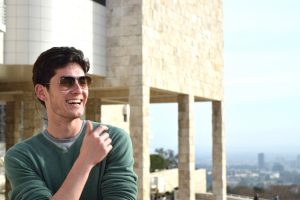
Q: What building evoked a strong reaction from you recently—either positive or negative?
A:“Tulou” structures are found in the village of Xiashi in the Fujian province of China. They are incredibly massive rammed-earth structures that appear monolithic on the exterior, but more amazingly within the tulou, we find a microcosm of a city. The contemporary lifestyle of the village finds its place in the ancient built forms of the past.
Q: What is the last book you read?
A: The last book I read was The Happiness Advantage by Shawn Achor. The essential message of the book is that your happiness precedes your success. It changed my outlook on how to live and how to work.
Q: How did you discover your passion for architecture?
A: I found my passion for architecture in the place where I was raised – in a mid-century modern neighborhood called Hollin Hills, designed by the architect Charles Goodman. The neighborhood is characterized by glass box houses nestled within dense tree canopies, that offers a profound connection between architecture and nature.
Q: What is your favorite thing to do to relax?
A: When I get the chance to relax, I like to play tennis, golf, or run – really any outside activity brings me peace.
Q: What advice do you have for aspiring architects?
A: As an aspiring architect myself, it’s hard to say! But to steal a piece of advice that I took from my college professors, I would say it is important to “learn how to learn.” I think that somehow, you have to keep up a ravenous appetite for learning to have more knowledge to draw from in the practice of architecture.
Alyssa Tope
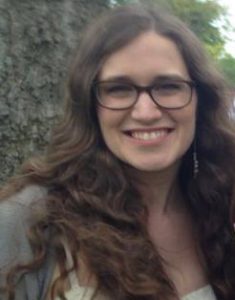
Q: What building evoked a strong reaction from you recently—either positive or negative?
A: I recently learned about Tanner Springs Park in Portland, OR. It was very inspiring to see the designers honor both the ecological and industrial history of the site in a sustainable way. Although it is not a building, this way of thinking will absolutely inform my future projects.
Q: What is the last book you read?
A: Architecture-related: Landscape Urbanism Reader by Charles Waldheim. Non-Architecture-related: Yes Please by Amy Poehler
Q: How did you discover your passion for architecture?
A: I first knew I wanted to be an architect in 5th grade when I was told to design “the ultimate dog house.” Since then, I continue to fall in love with architecture because it gives me the ability to express all facets of my mind. Design allows me to solve problems, be creative, and serve people and the environment.
Q: What is your favorite thing to do to relax?
A: Whether I am hiking or bicycling down a rural road, I am never more relaxed and my thoughts are never clearer than when I am in nature.
Q: What advice do you have for aspiring architects?
A:Working in the studio or the office until 3 a.m. won’t teach you or inspire you nearly as much as a new experience (especially those outside of the architectural world). As author Kent Nerburn wrote, “If we don’t offer ourselves to the unknown, our senses dull, our world becomes small, and we lose our sense of wonder.”
Asher McGlothlin
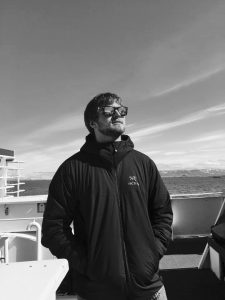
Q: What building evoked a strong reaction from you recently- either positive or negative?
A: The church at Stykkisholmur, Iceland, designed by Jon Haraldsson. The church’s simplicity is comforting and inviting, allowing one to feel at ease upon entering the space.
Q: What is the last book you read?
A: Musicophilia by Oliver Sacks. A great book on music’s effects on the brain. Oliver Sacks pulls inspiration from E.O. Wilson’s hypothesis of Biophilia to propose that human beings have an innate connection and need for music.
Q: How did you discover your passion for architecture?
A: My grandfather was a carpenter and growing up I spent a lot of time helping him with his projects. He has a great eye for design and inspired me to follow in his footsteps.
Q: What is your favorite thing to do to relax?
A: Play music. Being able to focus only on the current moment is the essence of meditation and music is the best route I’ve found to do this. When you really get into a song, and put your all into playing it, it is impossible to focus on anything but the present moment.
Q: What advice do you have for aspiring architects?
A: Follow your heart down whatever road it leads you. It is always wise to listen to those who have more experience than you and to account for their advice in your decisions, but at the end of the day, you are the one who has to live with those decisions. So follow the trail that calls to you. It may be rough at times, but a great story has never been told in which conflict wasn’t present.
Braden Field
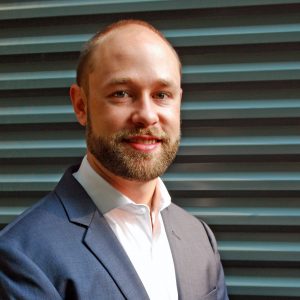
Q: What building evoked a strong reaction from you recently—either positive or negative?
A: Not exactly a building, but I was mesmerized by the Wonder exhibit at the Renwick Gallery in DC earlier this year.
Q: What is the last book you read?
A: The Burglar’s Guide to the City by Geoff Manaugh.
Q: How did you discover your passion for architecture?
A: I’ve always been curious about by how things go together. I was also fascinated by the scale of architecture’s impact on the world and found beauty in good design. Sometime late in high school, I decided that I wanted to pursue architecture as a career, and haven’t looked back since.
Q: What is your favorite thing to do to relax?
A: I love to cook. Preparing a meal from scratch, especially without a recipe, and sharing it with good friends and family is always enjoyable.
Q: What advice do you have for aspiring architects?
A: Don’t wait for the next great project or client, the next better job, or the next promotion – find ways to make whatever you’re working on, wherever you’re working on it, in whatever role you have, the best thing you’ve ever done. Be careful – what you’re working on right now may be the best thing you ever do. Stay curious, and never stop trying to learn.
Brian Gurczynski
Q: What building evoked a strong reaction from you recently—either positive or negative?
A: Pantheon, positively.
Q: What is the last book you read?
A: Code Commentary, I don’t have much time to read these days.
Q: How did you discover your passion for architecture?
A: When I was a kid I liked drawing floor plans of my ideal snowboarding cabin. I must have drawn over 1,000 of them in middle school.
Q: What is your favorite thing to do to relax?
A: Boating
Q: What advice do you have for aspiring architects?
A: Do not let your limited experience intimidate you to provide creative input.
Chris Warren
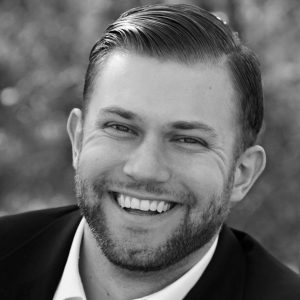
Q: What building evoked a strong reaction from you recently—either positive or negative?
A: 400 Grove by Fougeron Architecture really made a positive impact on me about how I want to approach façade shape and details in my buildings.
Q: What is the last book you read?
A: The Kaplan Site Planning and Design Study Guide since I am taking my exams right now. But I wish I was reading Plato’s Republic right now.
Q: How did you discover your passion for architecture?
A: I was born this way. Seriously, though, I’ve always wanted to be an architect my whole life, so it wasn’t something I discovered.
Q: What is your favorite thing to do to relax?
A: I like to make things. Recently I restored my Great Grandfather’s dresser into a cabinet.
Q: What advice do you have for aspiring architects?
A: Apply to one of those new programs where you take all the ARE’s in school. Having a job and studying after work is not fun.
Donna Ryu
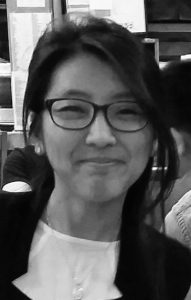
Q: What building evoked a strong reaction from you recently—either positive or negative?
A: Albert Kahn’s Herman Kiefer Hospital in Detroit, Michigan (1954). Positive – Detroit is a historically rich and inspiring city that is rebuilding from the ground up. This historic hospital is one of many being advocated for and anticipated to be preserved and reimagined in Detroit’s efforts to rebuild their urban landscape!
Q: What is the last book you read?
A: The Girl on the Train by Paula Hawkins
Q: How did you discover your passion for architecture?
A: I can’t recall an exact moment where I knew architecture was for me. It has become a profession that fills my curiosity and continues to challenge the way I see & experience the world.
Q: What is your favorite thing to do to relax?
A: I can’t choose just one – watching a good movie or reading a book (or a comic book!)
Q: What advice do you have for aspiring architects?
A: Don’t only do architecture. Be inspired and re-inspired by people, music, film, animation, food, etc.
Janine Stewart
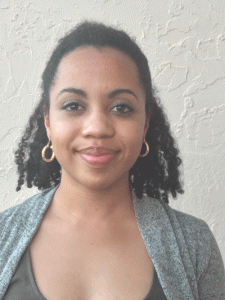
Q: What building evoked a strong reaction from you recently—either positive or negative?
A: It has yet to be completed, but the design for the National Museum of African American History and Culture, Washington, D.C., by Freelon, Adjaye, Bond/Smith and Group JJR really struck me. The symbolism is clear in the building’s form.
Q: What is the last book you read?
A: The Kite Runner by Khaled Hosseini. Once I started it, I couldn’t put it down.
Q: How did you discover your passion for architecture?
A: Both my parents (neither of whom are architects) led me to this passion. I watched my father design our house and was fascinated by the process, and my mother started the tradition of driving around looking at houses and buildings whenever we were out and had time to kill.
Q: What is your favorite thing to do to relax?
A: Watch movies or TV shows. The creators of Netflix have simultaneously enriched my life and stolen my time.
Q: What advice do you have for aspiring architects?
A: Architects can shape cultures and lifestyles: don’t take that for granted and the learning never stops – embrace it, it’s wonderful.
Kelsey Oesmann
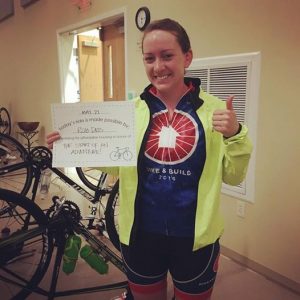
Kelsey is currently biking across America with Bike & Build, to raise funds and awareness for affordable housing.
You can follow her trek at https://coasttocoastkelsey.com/
Watch for her answers to the 5 questions later this summer!
Kevin Svensen
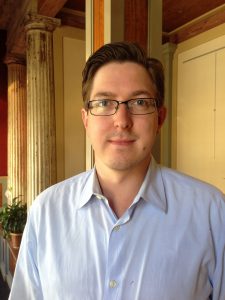
Q: What building evoked a strong reaction from you recently—either positive or negative?
A: While in Rome my wife and I attended a traditional Baroque concert at Sant’ Agnese in Piazza Navona and I had never experienced beauty so fully before. Being surrounded by Classical Baroque architecture, painting, sculpture and music delighted all the senses in an amazing way. It was a spiritual experience I did not expect going into it.
Q: What is the last book you read?
A: I read a lot of children’s books these days to my 2 ½-year-old daughter Linnea. The last I read was The Very Hungry Caterpillar among many others.
Q: How did you discover your passion for architecture?
A: I have wanted to be an architect for as long as I can remember. That passion was developed through art, woodworking and construction. I have always been curious about how things go together.
Q: What is your favorite thing to do to relax?
A: I enjoy traveling, which mostly consists of finding beautiful places and cities to enjoy good food, wine, and coffee.
Q: What advice do you have for aspiring architects?
A: Travel, especially to Europe, and never stop drawing.
Kyle Springer
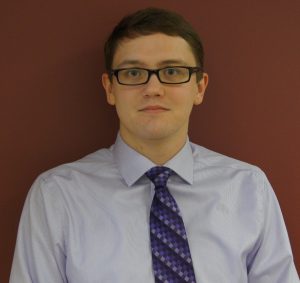
Q: What building evoked a strong reaction from you recently—either positive or negative?
A: The Whitney Museum
Q: What is the last book you read?
A: Wolf in White Van by John Darnielle
Q: How did you discover your passion for architecture?
A: I found my passion while my father built an addition on his house. Watching the process go from sketches to something real was quite transformative to the way I saw buildings.
Q: What is your favorite thing to do to relax?
A: Record shopping
Q: What advice do you have for aspiring architects?
A: Travel. I don’t think it’s possible to see too much.
Lauren McQuistion
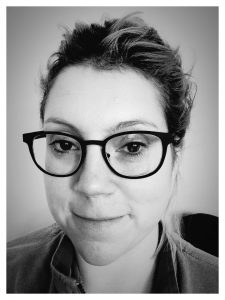
Q: What building evoked a strong reaction from you recently—either positive or negative?
A: Marcel Breuer designed the original Whitney Museum in New York City in 1966. It recently reopened as the Met Breuer after the Whitney as an institution relocated to a new Renzo Piano building. Some people hate the original Breuer building. Some people love it. I happen to love it so much I found a way to make it the focus of my graduate thesis, and I’m so glad it’s finally open again and full of art! If you haven’t ever seen images or details of the staircase, look it up.
Q:What is the last book you read?
A: Detroit City is the Place to Be by Mark Binelli
Q: How did you discover your passion for architecture?
A: My dad is an architect. I grew up around drafting boards and trace paper. I suppose going to the office with him on Saturday mornings as a little kid should have been a foreshadowing of all the hard work and long hours that go into this profession, but at the same time, that challenge to work hard and constantly learn and grow is exactly what I enjoy the most about it.
Q: What is your favorite thing to do to relax?
A: I read. A LOT.
Q: What advice do you have for aspiring architects?
A: Stick up for yourself and the things you believe in. Don’t be afraid to take chances in your design work and you career path. Listen and learn as much as you can about as many things as you can even if it doesn’t seem directly relevant to architecture. And ask questions. Lots of questions.
Luke Stearns
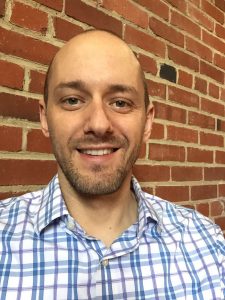
Q: What building evoked a strong reaction from you recently—either positive or negative?
A: Philharmonie de Paris, Jean Nouvel. Not without some controversy and construction challenges, this definitely still evoked a positive reaction.
Q: What is the last book you read?
A: Seven Eves by Neal Stephenson. I have a soft spot for well-written science fiction.
Q: How did you discover your passion for architecture?
A: While studying abroad as an undergraduate in Budapest, Hungary I grew increasingly passionate about the architecture that surrounded me there and on my travels.
Q: What is your favorite thing to do to relax?
A: Hiking in the mountains and working in my shade garden have recently been my favorite ways to relax.
Q: What advice do you have for aspiring architects?
A: Walk. Slowing down allows us to notice things that would otherwise buzz by in anonymity. Take the time to see the world around you and explore to find as many different worlds as you can.
Michael Chapa
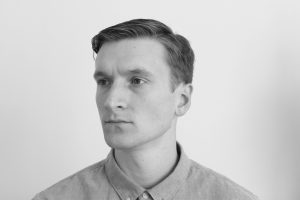
Q: What building evoked a strong reaction from you recently—either positive or negative?
A: When I first visited New York City I took a train and arrived through Grand Central Station and was awestruck by the grand hall. I recently visited Calatrava’s new World Trade Center hub and it took me back to that moment. I still feel humbled and challenged to build something as gripping.
Q: What is the last book you read?
A: The Food Lab by J. Kenji Lopez-Alt
Q: How did you discover your passion for architecture?
A: I had a great art teacher in high school who patiently taught a friend and I the fundamentals of collage and composition. A few weeks into architecture school I made the connection between those lessons and our studio assignments. (Thanks, Ms. Malbon!) I’ve lost and found it another 100 times since then, but that was the first.
Q: What is your favorite thing to do to relax?
A: I crave variety and I fight every day against routine, though cooking is the one thing I will do to tune out everything else. I have no problem spending three or four hours on a weeknight making an amazing meal, practicing with a new ingredient, or learning a new technique.
Q: What advice do you have for aspiring architects?
A: Do what you want to do.
Robert Crawshaw

Q: What building evoked a strong reaction from you recently—either positive or negative?
A: I am constantly inspired by the work of those that put as much time into the detail as they do the form. There are a few firms out there that are starting to mix fabrication into their design culture; if you can resolve the level of ornament needed on a stand-alone piece of furniture, you likely can translate that into emotional environments.
Q: What is the last book you read?
A: As a proud Hampton Roadsteader, most of my “reading” is on CD…in traffic. Lately, I have been listening to the speeches of Martin Luther King, Jr. for his ability to find center.
Q: How did you discover your passion for architecture?
A: Every summer my family would visit my grandparents and we would stay in a house my grandfather built on a steep slope overlooking a lake. From the front door, you could see the window wall at the back of the house but the transparency was less about looking out over the water and more about drawing you into the house with the sky.
Q: What is your favorite thing to do to relax?
A: Whenever I find time to devote to myself, I like to learn some new skill applicable to arts in general; not to master, but to increase my appreciation for those that have mastered and have a better understanding of what my hands can do.
Q: What advice do you have for aspiring architects?
A: There are few things I appreciate more than my parent’s insistence on me developing my writing skills; not just for the compositional outcomes, but the analytical mindset required to cultivate and convey an argument. Couple writing with a willingness to get your hands dirty through art and fabrication and anyone could have an incredible career.
Simone Saidel
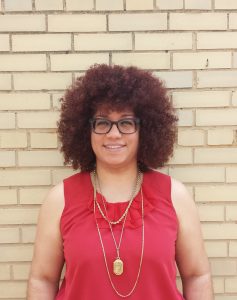
Q: What building evoked a strong reaction from you recently—either positive or negative?
A: Barnes Foundation, Philadelphia, PA (very positive reaction)
Q: What is the last book you read?
A: Ballast ARE 4.0 Structural Systems
Q: How did you discover your passion for architecture?
A: I began asking for house tours at a young age. I was fascinated by how people lived in their homes. The requests for building tours followed shortly after.
Q: What is your favorite thing to do to relax?
A: Listening to music
Q: What advice do you have for aspiring architects?
A: Don’t be afraid to speak up and ask questions. Your knowledge base increases and it will help you find your voice.
We are excited to announce the individuals who will be a part of the 2016 class of Emerging Leaders in Architecture (ELA).
Alexander Cheng of Virginia Tech
Alyssa Tope of Washington-Alexandria Architecture Center
Asher McGlothlin of VMDO Architects
Braden Field of MTFA Architecture
Brian Gurczynski of Clark Nexsen, Inc.
Chris Warren of Cox, Kliewer & Co.
Donna Ryu of University of Virginia
Janine Stewart of Hampton University
Kelsey Oesmann of Antunovich Associates
Kevin Svensen of Glavé and Holmes Architecture
Kyle Springer of Moseley Architects
Lauren McQuistion of VMDO Architects
Luke Stearns of AECOM
Michael Chapa of Parsons Brinckerhoff
Robert Crawshaw of Hanbury Evans Wright Vlattas + Company
Simone Saidel of LKH Architects
Watch AIA Virginia NEWS for updates after each class meeting (first one is January 8, 2016) and for more information on their class project in Richmond this year!
Application deadline extended to Nov. 30, 2015. Apply today!
AIA Virginia announces a call for applications for the 2016 class of Emerging Leaders in Architecture: An Honors Academy of AIA Virginia (ELA).
ELA is an intensive program of educational sessions structured around presentations, discussions, team exploration, analysis, consensus-building, collaboration, and case study activities undertaken over the course of a year by a small cadre of participants selected for their potential to be outstanding contributors to the profession and the community. Facilitators and mentors who are established leaders in the building, finance, non-profit, development, university, legal, consulting, and design professions and in the community at large develop and deliver the sessions, designed to provide participants with advanced knowledge and skills related to specific areas of leadership and practice.
The program consists of seven, day-long seminars, several work sessions, culminating with a presentation at Architecture Exchange East. Download the program outline and application. The seminars are interactive, drawing on real examples and actively involving participants. They rotate among sites in Roanoke, Charlottesville, Richmond, Alexandria and Norfolk in conjunction with the firms, schools, and the local AIA component in each area.
How to Apply
The committee seeks applicants from three categories:
Component Nominees Each of the five Virginia AIA local component Boards may nominate one or more individuals for admission to the program. One participant will be selected from each chapter for a total of five.
Student Nominees Each Virginia Architecture School (UVa, VT, Hampton, and WAAC) may nominate one or more students for admission to the program. One participant will be selected from each school for a total of four.
Open Applications Applicants may apply on their own or be nominated by someone else. Seven participants will be selected from among these applicants.
Find out more information by downloading the program outline and application (hyperlink to the same file as above) or by contacting Marshall Dreiling (hyperlinked to my email). The application deadline is Nov. 15, 2015.
How to Apply
The committee seeks applicants from three categories:
Component Nominees: Each of the five Virginia AIA local component Boards may nominate one or more individuals for admission to the program. One participant will be selected from each chapter for a total of five.
Student Nominees: Each Virginia Architecture School (UVa, VT, Hampton, and WAAC) may nominate one or more students for admission to the program. One participant will be selected from each school for a total of four.
Open Applications: Applicants may apply on their own or be nominated by someone else. Seven participants will be selected from among these applicants.
Find out more information by downloading the program outline and application or by contacting Marshall Dreiling.